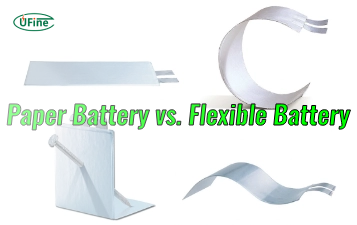The rise of renewable energy sources has led to a significant increase in the use of energy storage solutions, particularly batteries. The CE battery is critical in ensuring safety and compliance within the energy storage sector. This article will explore the essential aspects of CE batteries, their importance in energy storage, and the regulations governing their use.
Part 1. What is a CE battery?
A CE battery complies with the European Union’s Conformité Européenne (CE) marking, which indicates that the product meets safety, health, and environmental protection standards. This marking is crucial for manufacturers and consumers, ensuring the battery has undergone rigorous testing and meets the required regulations.
Types of CE-Certified Batteries
CE marking applies to various types of batteries, including:
- Lithium-ion batteries: Commonly used in consumer electronics and electric vehicles.
- Lead-acid batteries: Often used in automotive and industrial applications.
- Nickel-cadmium batteries: Used in power tools and emergency lighting.
Why is CE Marking Important?
CE marking is essential for several reasons:
- Consumer Safety: Ensures that batteries are safe and do not harm users.
- Market Access: Facilitates the sale of batteries within the European market, as CE marking is a requirement for many products.
- Environmental Compliance: Helps ensure that batteries are manufactured and disposed of in an environmentally friendly manner.
Part 2. The role of CE batteries in energy storage solutions
CE batteries play a vital role in energy storage solutions, enabling the efficient storage and distribution of energy generated from renewable sources. You can understand their significance through the following aspects:
Energy Efficiency
CE batteries enhance energy efficiency by storing excess energy generated during peak production. This stored energy can be utilized during periods of high demand, reducing reliance on fossil fuels and contributing to a more sustainable energy grid.
Grid Stability
By providing backup power and stabilizing voltage levels, CE batteries contribute to the overall stability of the energy grid. As we integrate more renewable energy sources into the grid, fluctuations in energy supply can occur, making this particularly important.
Integration with Renewable Energy Sources
CE batteries facilitate the integration of renewable energy sources, such as solar and wind, by storing energy when production exceeds demand. This capability is crucial for maximizing renewable resources and reducing greenhouse gas emissions.
Part 3. CE battery products requiring CE certification
Several products utilize CE batteries and require CE certification to ensure safety and environmental standards compliance. Key products include:
- Electric vehicles (EVs) rely on CE-marked batteries for propulsion and energy efficiency.
- Portable electronic devices: Smartphones, laptops, and tablets often use lithium-ion batteries that must be CE-certified.
- Energy storage systems: Home and commercial energy storage solutions integrating solar panels or wind turbines require CE certification to ensure safety and compliance.
- Power tools: Cordless power tools that utilize rechargeable batteries must meet CE marking requirements for safety.
Part 4. Safety standards for CE batteries
Safety is a paramount concern in the production and use of CE batteries. Several safety standards must be adhered to, including:
This international standard specifies safety requirements for portable sealed secondary cells and batteries. It covers aspects such as:
- Mechanical safety: Ensures that batteries can withstand physical stress without leaking or bursting.
- Electrical safety: Addresses risks related to overcharging and short circuits.
The United Nations (UN) 38.3 standard outlines the testing requirements for lithium batteries to ensure safe transport. This includes:
- Altitude simulation: Tests the battery’s performance under low-pressure conditions.
- Thermal cycling: Evaluates the battery’s ability to withstand temperature fluctuations.
Part 5. CE battery testing and certification processes
Manufacturers must subject their batteries to rigorous testing and certification processes to achieve CE marking. These processes generally include:
Product Testing
We conduct comprehensive testing to evaluate the battery’s performance under various conditions. This includes:
- Capacity testing: Measures the battery’s ability to hold a charge.
- Cycle life testing: Assesses how many charge-discharge cycles the battery can undergo before performance declines.
Documentation Requirements
Manufacturers must prepare extensive documentation to demonstrate compliance with CE standards. This documentation typically includes:
- Technical file: A comprehensive file detailing the battery’s design, manufacture, and operation.
- Risk assessment: An analysis of potential hazards associated with the battery and measures taken to mitigate them.
Certification by Notified Bodies
Manufacturers must submit their products for certification by a Notified Body, an organization designated by EU member states to assess conformity with regulations. This process ensures that the battery meets all safety and compliance standards.
Part 6. Common applications of CE batteries
CE batteries are utilized in various applications, reflecting their versatility and importance in modern energy solutions. Common applications include:
Electric Vehicles (EVs)
CE batteries are crucial for powering electric vehicles. They provide the energy needed for propulsion and enhance the overall efficiency of EVs.
Renewable Energy Storage Systems
CE batteries in solar and wind energy systems store excess power generated during peak production, ensuring a reliable energy supply during low production.
Consumer Electronics
CE batteries power various consumer electronics, from smartphones to laptops, demonstrating their significance in daily life.
Power Backup Systems
CE batteries are also used in uninterruptible power supplies (UPS) and backup power systems, providing essential power during outages.
Part 7. Challenges facing CE battery compliance
Despite the advantages of CE batteries, several challenges exist in ensuring compliance:
Rapid Technological Changes
The fast pace of technological advancements can make it difficult for manufacturers to keep up with evolving regulations and standards.
Cost of Compliance
Compliance with CE marking requirements can be costly, particularly for smaller manufacturers. This includes expenses related to testing, certification, and product modifications.
Best Practices for Manufacturers
To navigate the complexities of CE battery compliance successfully, manufacturers should consider the following best practices:
Stay Informed of Regulations
Regularly updating knowledge of relevant regulations and standards is crucial. Manufacturers should engage with industry associations and regulatory bodies to stay informed.
Invest in Quality Assurance
Implementing robust quality assurance processes can help ensure that products meet safety and compliance standards, reducing the risk of recalls or penalties.
Engage with Notified Bodies Early
Collaborating with Notified Bodies early in product development can streamline the certification process and help identify potential compliance issues.
Part 8. FAQs
-
What does CE marking mean for batteries?
CE marking indicates that a battery complies with European safety, health, and environmental protection standards, ensuring its safety for use. -
How do CE batteries contribute to renewable energy?
CE batteries store excess energy generated from renewable sources, allowing for efficient energy distribution and reducing reliance on fossil fuels. -
What are the critical safety standards for CE batteries?
Essential safety standards include IEC 62133 for portable batteries and UN 38.3 for safely transporting lithium batteries. -
What regulations govern the use of CE batteries in the EU?
The Battery Directive (2006/66/EC) and RoHS Directive (2011/65/EU) are critical regulations governing the production, disposal, and recycling of CE batteries. -
What challenges do manufacturers face in CE battery compliance?
Manufacturers face challenges such as rapid technological changes, the cost of compliance, and the need to stay informed about evolving regulations.
Related Tags:
More Articles

Paper Battery vs. Flexible Battery: What’s the Difference and Which Is Better?
Paper vs. flexible batteries: learn the key differences, benefits, and which power source fits best for wearables, sensors, and smart tech.
What to Know Before Buying a Tiny LiPo Battery for Your Project
Tiny LiPo batteries are powerful and compact. Learn how to choose the right one for your project with specs, safety, and charging tips.
Bloated LiPo Battery: Will It Explode?
Will a bloated LiPo battery explode? Discover the causes, risks, safety steps, and expert tips to avoid disaster and protect your gear. Must-read safety guide!
12V 100Ah Lithium Ion Battery Price: Full Guide
Learn about 12V 100Ah lithium-ion battery price, from cost ranges to best brands, hidden fees, and how to get the best deal. A must-read for smart buyers!
Resistance and Conductivity: What It Means for Your Lithium Batteries
Resistance and conductivity impact lithium battery performance, lifespan, and safety—learn how they work and why they matter.





